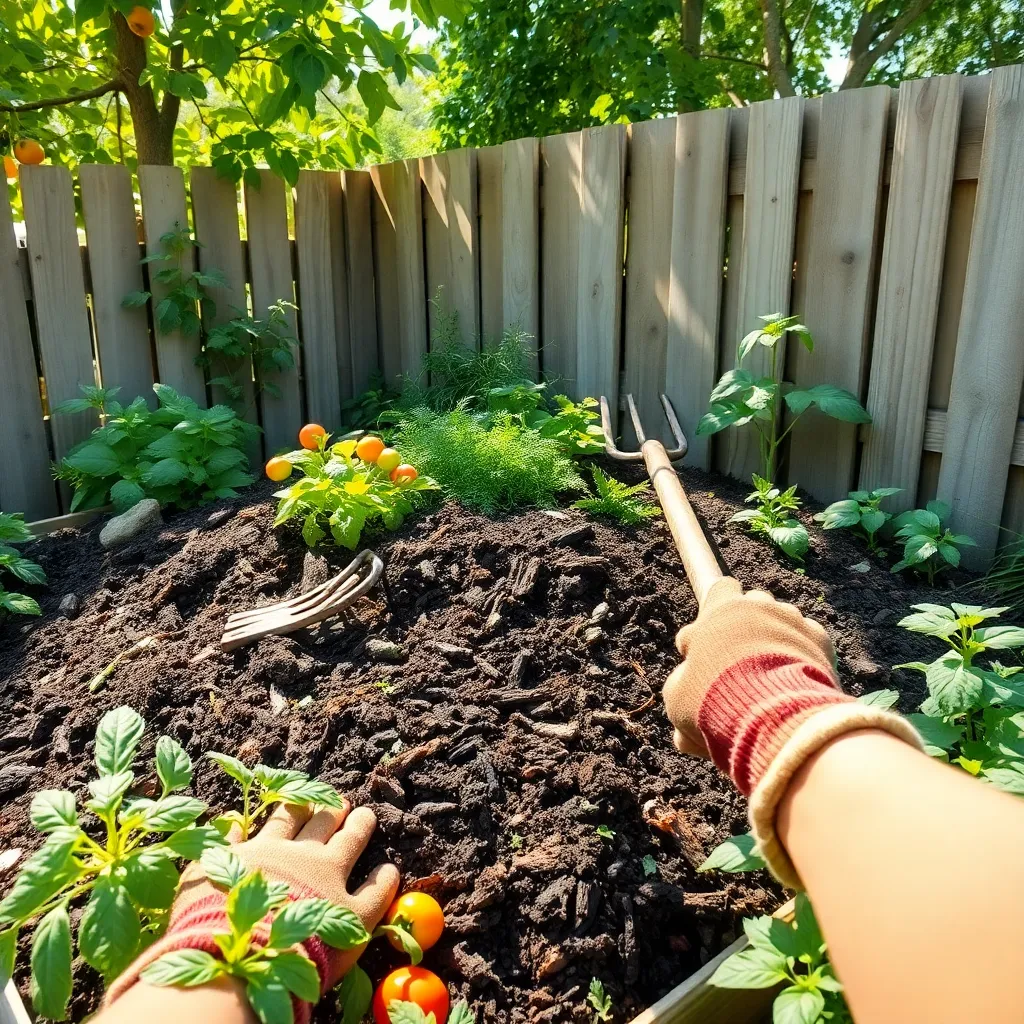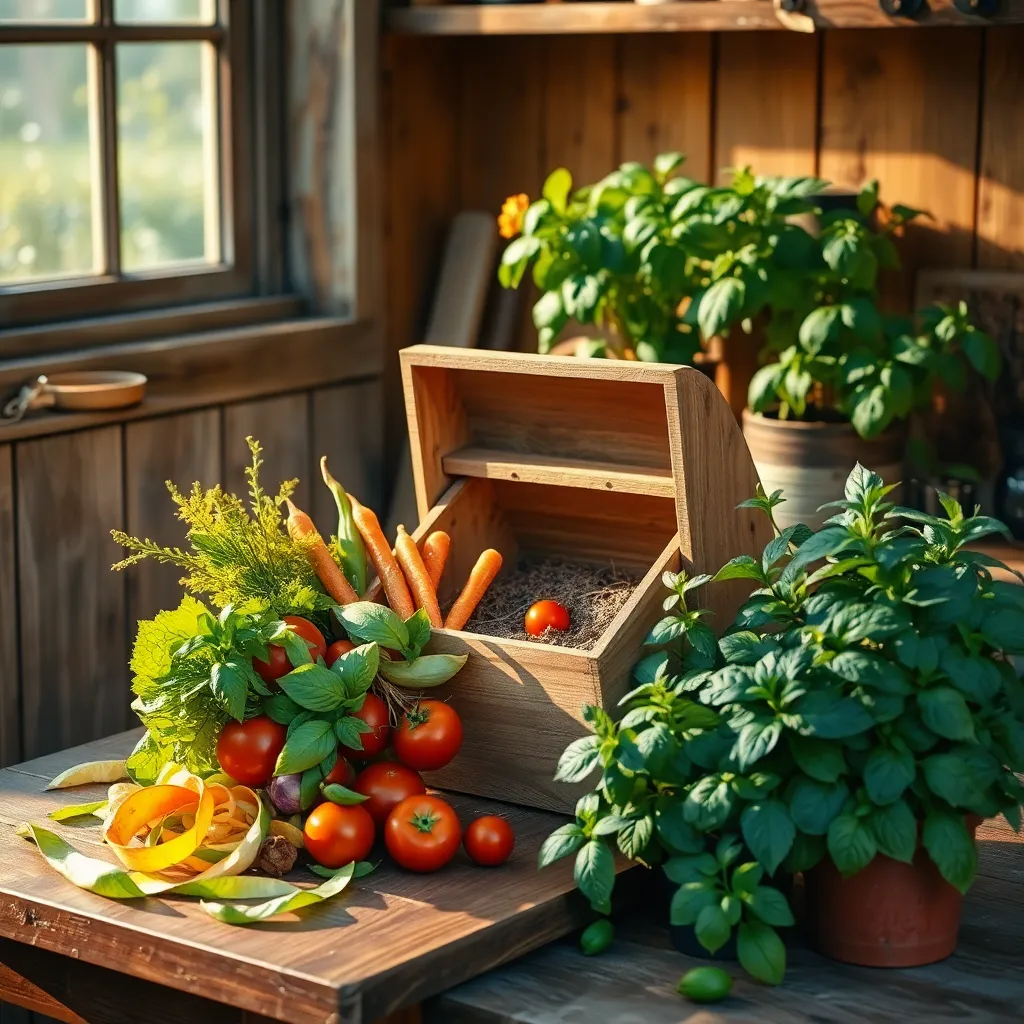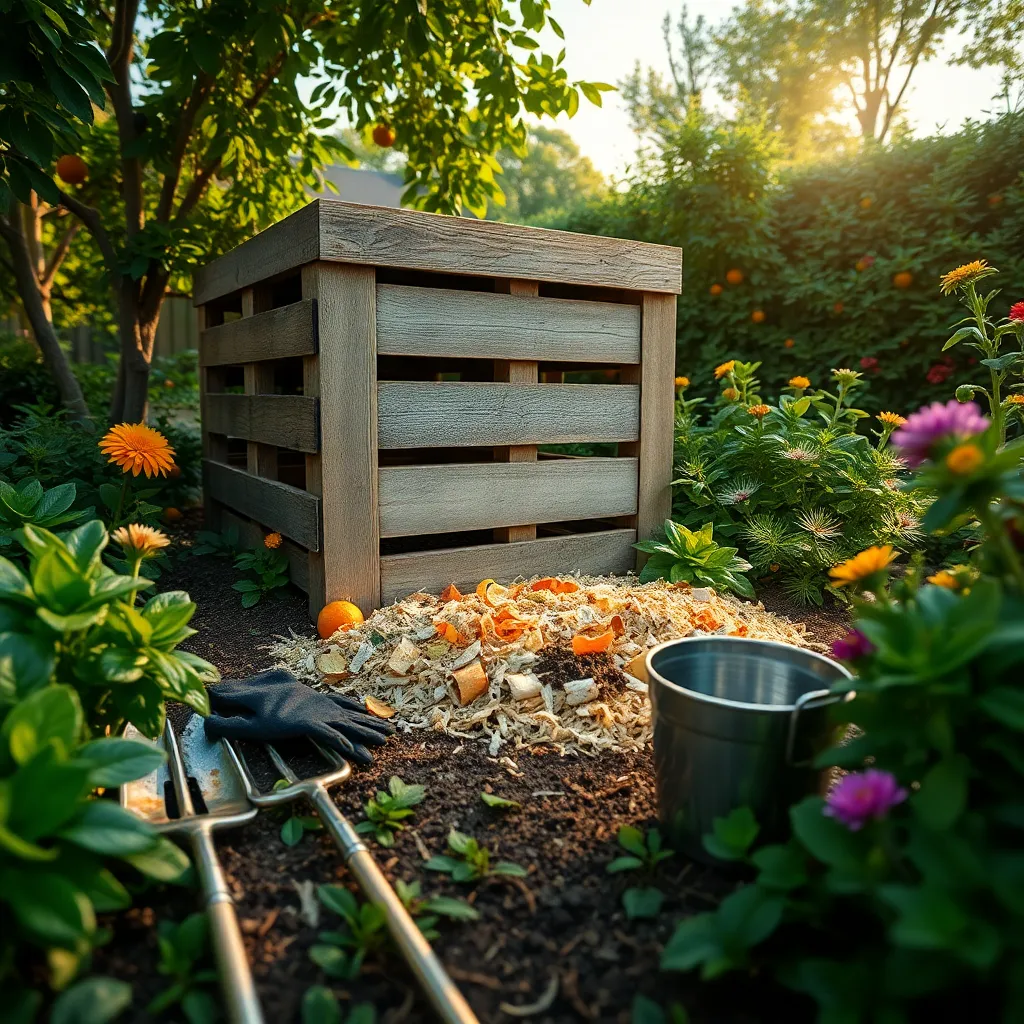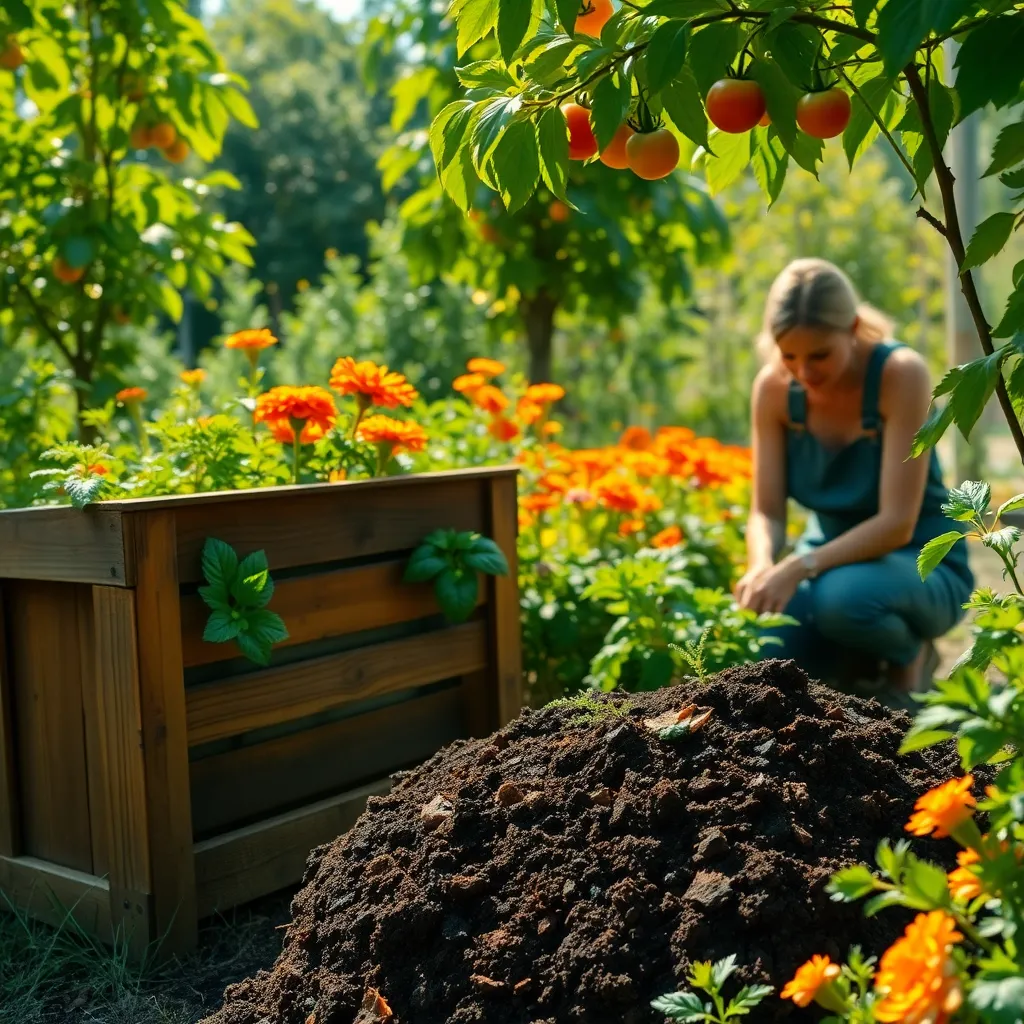Turning kitchen scraps into garden gold is more than just an eco-friendly trend; it’s a rewarding practice that enriches your soil and reduces waste. Whether you’re a novice gardener or a seasoned horticulturist, composting can transform the way you nurture your plants and contribute to a healthier planet with minimal effort.
Imagine the satisfaction of knowing that the peels, pits, and leftovers from your kitchen aren’t just discarded, but are instead playing a vital role in the cycle of life in your garden. In this article, you’ll discover how to start your own compost pile using everyday kitchen waste, learn the science behind decomposition, and explore tips for maintaining an efficient and odor-free compost system.
For those just dipping their toes into the world of gardening, composting can seem intimidating, but it’s simpler than you might think. Experienced gardeners will find new insights on optimizing their composting routine and troubleshooting common issues, ensuring that every bit of organic waste is put to good use. No matter your level of experience, by the end of this journey, you’ll be equipped with the knowledge and confidence to turn kitchen scraps into a thriving, nutrient-rich addition to your garden.
Understanding Composting Basics

Composting is a natural process that transforms organic waste into nutrient-rich soil amendment. By understanding the basics, you can start turning your kitchen waste into valuable compost for your garden.
To begin composting, you need a good balance of ‘green’ and ‘brown’ materials. Green materials include kitchen scraps like fruit and vegetable peels, which provide nitrogen, while brown materials like dried leaves or shredded paper add carbon.
Layering these materials in your compost pile helps with aeration and decomposition. It’s essential to keep the compost moist but not waterlogged; aim for the consistency of a damp sponge.
Regularly turning your compost pile ensures that air circulates, promoting faster decomposition. For a more advanced approach, consider using a compost thermometer to monitor the internal temperature, which should ideally be between 135°F and 160°F to kill pathogens and weed seeds.
Once your compost is ready, it will have a dark, crumbly texture and an earthy smell. Incorporate it into your garden soil to improve its structure, water retention, and nutrient content, benefiting plant growth and health.
Remember, composting is a flexible process and can be adapted to fit your space and gardening goals. Whether you have a small urban space or a large backyard, composting your kitchen waste is a practical and environmentally friendly practice that yields rewarding results for your garden.
Choosing Suitable Kitchen Scraps

When it comes to composting, selecting the right kitchen scraps is key to creating nutrient-rich compost for your garden. Vegetable peels, fruit scraps, and coffee grounds are excellent choices because they break down quickly and provide essential nutrients like nitrogen and potassium.
To optimize your compost pile, avoid using scraps that can attract pests or take too long to decompose. Meat, dairy products, and oily foods should be excluded, as they can cause odors and unwanted visitors.
A balanced compost pile benefits from a variety of materials, so incorporate both green and brown ingredients. Green materials like banana peels and apple cores add moisture and nitrogen, while brown materials such as egg cartons and dried leaves provide carbon and structure.
For gardeners looking to enhance their compost, consider crushing eggshells before adding them to the mix. Eggshells decompose slowly but add valuable calcium, which can help improve soil structure and support plant growth over time.
Setting Up Your Compost Bin

Setting up a compost bin is a straightforward process that can greatly benefit your garden. Begin by selecting a location that is convenient yet out of direct sunlight to prevent your compost from drying out too quickly.
Choose a bin that suits your space; options range from simple DIY setups to commercially available compost tumblers. Ensure your bin has good ventilation to allow for proper aeration, which is crucial for the decomposition process.
Once your bin is in place, layer different types of materials to create a balanced compost. Alternate between “green” materials, such as fruit and vegetable scraps, and “brown” materials, like dried leaves or shredded newspaper, to maintain the right carbon-to-nitrogen ratio.
For advanced composting, consider adding a handful of garden soil or a compost starter to introduce beneficial microbes. Regularly turn your compost every couple of weeks with a garden fork to speed up decomposition and prevent unpleasant odors.
Maintaining the Compost Pile

Maintaining your compost pile is essential for successful composting and ultimately a thriving garden. Begin by ensuring your pile has a balance of green materials like fruit scraps and brown materials such as dried leaves; this balance is crucial for the composting process to work efficiently.
Turning your compost pile every 1-2 weeks helps introduce oxygen, which is essential for aerobic bacteria to break down organic matter. Use a pitchfork or a compost aerator tool to mix the pile, ensuring that materials from the center are moved to the outside and vice versa.
It’s important to monitor the moisture level of your compost; it should feel like a wrung-out sponge. If it’s too dry, sprinkle water evenly over the pile, but avoid overwatering, as excess moisture can lead to anaerobic conditions and unpleasant odors.
For gardeners aiming for quicker composting, consider chopping larger pieces of kitchen waste into smaller bits before adding them to the pile. This increases the surface area available to microbes, speeding up the decomposition process and producing usable compost more swiftly.
Periodically check the temperature of your compost pile; it should reach between 130°F and 160°F to effectively kill pathogens and weed seeds. If the pile isn’t heating properly, adding more green materials can provide the nitrogen boost needed to increase microbial activity.
Utilizing Compost in Your Garden

Compost is a gardener’s best friend, providing a rich, nutrient-dense soil amendment that enhances plant growth. To utilize compost effectively, mix it into your garden beds at the beginning of the planting season, about 2 to 4 inches deep into the soil.
Before planting, ensure that the compost is well-decomposed, as unfinished compost can harm plants by stealing nitrogen from the soil. For new garden beds, combine compost with existing soil in a 1:3 ratio to improve soil structure and drainage.
Incorporate compost into the soil when transplanting seedlings to give them a nutrient boost. Place a handful of compost in each planting hole, then mix it with the native soil to encourage strong root development.
Experienced gardeners often use compost as a top dressing for established plants, which helps to retain moisture and suppress weeds. Simply spread a 1-inch layer around the base of your plants, avoiding direct contact with the stems to prevent rot.
For advanced gardeners, consider creating a compost tea by steeping compost in water for 24 to 48 hours. Use this nutrient-rich liquid to water plants during the growing season, providing them with immediate access to essential nutrients.
Conclusion: Growing Success with These Plants
In our exploration of ‘Composting Kitchen Waste For Your Garden’, we delved into five key relationship concepts: understanding the parallels between nurturing a relationship and tending to a garden, recognizing the importance of communication akin to nutrient exchange, fostering patience as one does with slow composting processes, appreciating the value of small daily contributions, and embracing change as compost transforms waste into growth. Just as a thriving garden requires thoughtful attention and care, so do our relationships.
As an immediate step, consider setting aside time this week to start a small compost project with your loved one. This shared activity can serve as a metaphor for the effort and commitment needed to enrich your connection. As you embark on this journey, we encourage you to save this article for future reference, ensuring you have these nourishing insights at your fingertips.
Looking forward, remember that the success of any relationship, much like a flourishing garden, lies in consistent effort and the willingness to adapt and grow together. Bookmark this guide as a reminder of the simple, yet profound ways you can cultivate deeper connections. Together, let’s nurture both our gardens and our hearts.

